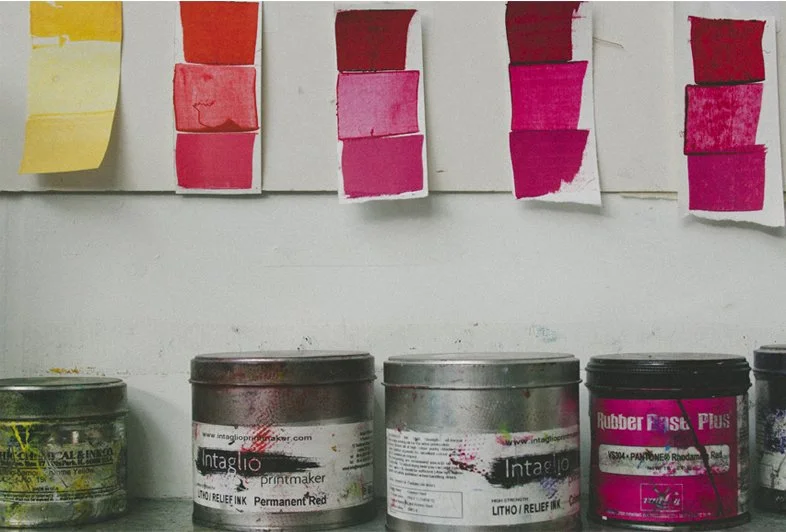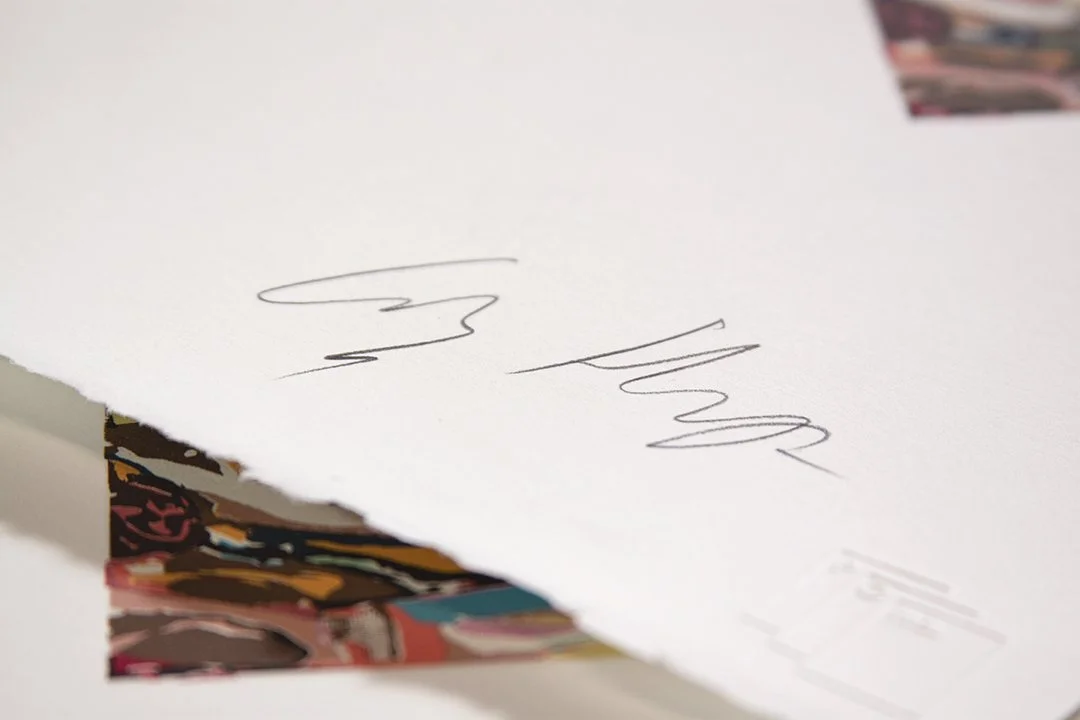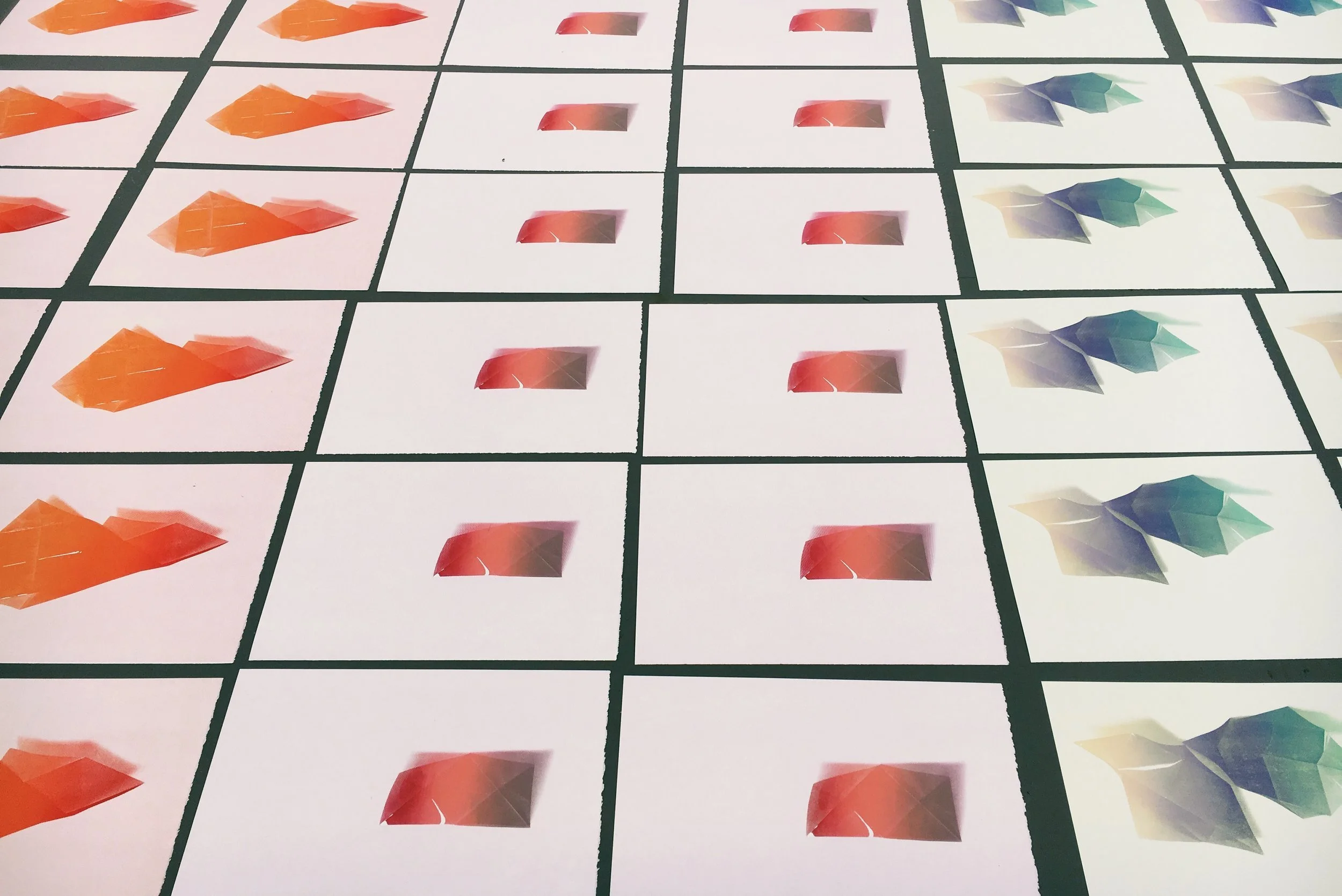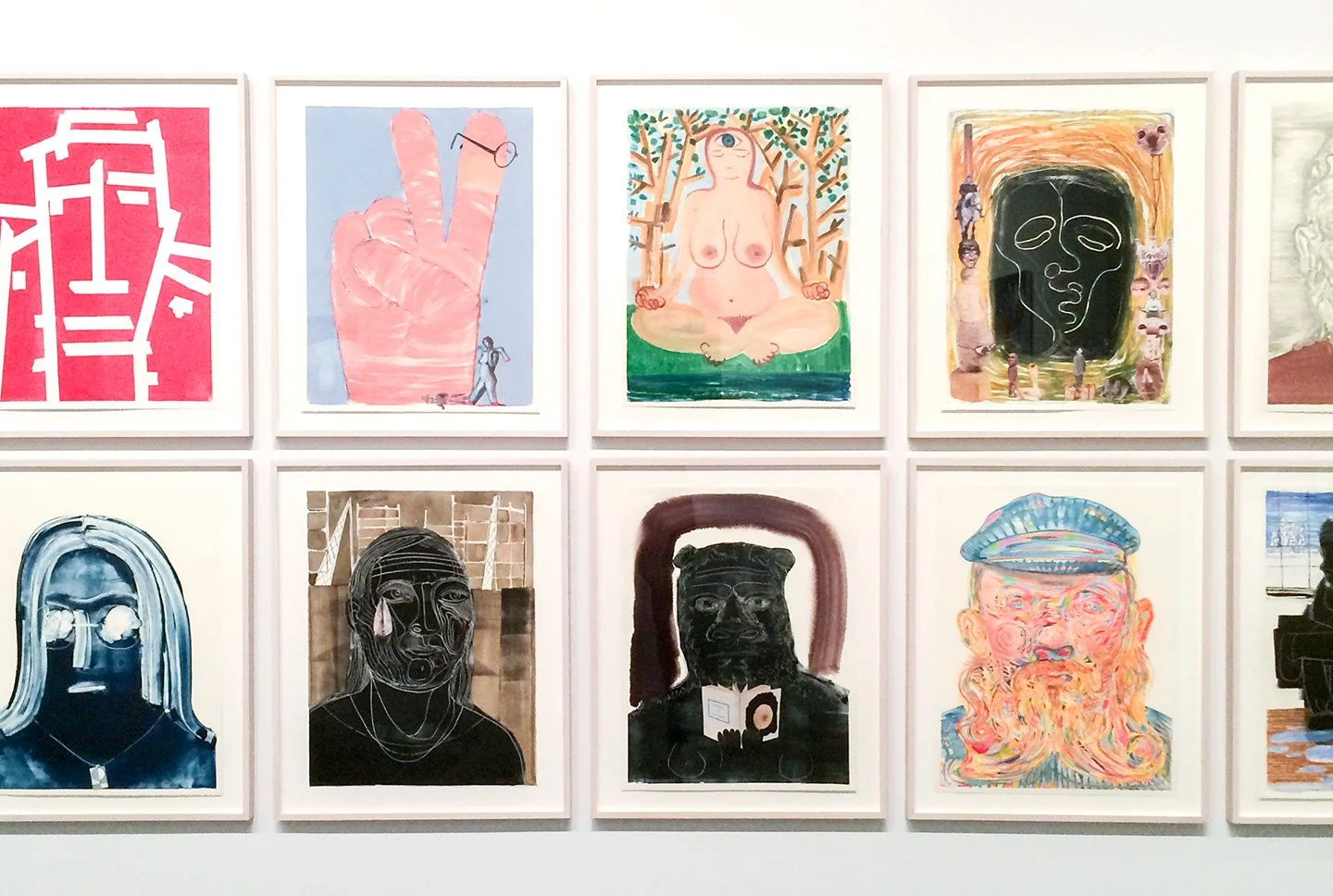02. Collecting Prints | Five Things to Know Before You Start
Prints are a wonderful way to start an art collection, enliven a room or support the work of a contemporary artists. The options for where to buy them both online and offline is ever-expanding, and knowing a little more about the printing terminology can help you make wise decisions around new acquisitions. We’ve outlined some key terms you may encounter and other considerations to keep in mind when getting your print collecting started.
The ink mixing station at Edinburgh Printmakers.
1. Know Your Printing Processes
It's important to have a good idea of the process through which the print has been made. We've gone into detail about the main fine art printmaking processes in this post and it is a great reference point.
Knowing these printing process will give you a good understanding of how the image has been constructed, the labor that has gone into its production and a good sense of its tactility and surface (particularly helpful when you’re purchasing online). For instance, an etching will always have the emboss from the metal plate on which the image is created whereas a screenprints will typically have a punchy flat application of color that sits on top of the paper.
2. Who is the artist and who is the printer?
There are many varieties in the particular relationship that is established between the artist, printer and publisher, particularly since selling prints online has grown enormously. Traditionally, an artist will work with a print studio to produce an edition and the process is funded by a publisher, who then takes on the task of selling the prints (and takes their sales percentage). Sometimes the print studio also acts as the publisher, or - depending on their skillset - the artist could also be the printer. In short, these collaborations can take many different forms.
Fine art prints result from a close collaboration between the artist and the printers who are highly skilled technicians and can make the artist's ideas a reality. If a printshop has been hired as a contract printer to execute a pre-determined job rather than being a collaborative participant, they won't necessarily be listed when the work is sold.
Conversely, there are print studios that have become historically significant in their own right, both for their technical ingenuity and for the quality of work produced there. Crown Point Press, Gemini G.E.L and Paragon Press for example. As a result, many collectors look to what new pieces have been produced at their favorite studio and regularly collect from their print releases.
Cody Hoyt's signature on the print we produced with him in 2016.
3. What is the size of the edition?
The "edition" refers to the number of the prints that have been produced. For a fine art edition, this number will be strictly upheld and no subsequent editions will be printed. A lower edition number is generally associated with a higher price point. Be wary of paying too much for a print that has no edition listed or is in an "open edition" as it is more of a print-on-demand situation. These pieces will generally not increase in value over time because of their incredibly wide distribution. 10 would be considered a very small edition, 50-100 is quite typical and 300+ would be a rather large edition size.
In the process of printing our "Fictional Gradients" screenprints - a very limited edition of 10 prints were produced of each design
4. What is an annotation?
This terms refers to anything written on the print by the artist or publisher. It can include the edition number, title or the artist's signature. Sometimes these will be clearly visible on the front of the print or will be identified as being written on the back of the paper. Typically the annotation shows the edition (1/100, 2/100 etc.) but it can also have letters like A.P or P.P which mean "Artist's Proof" and "Printer's Proof" - these won't typically be made available for sale but may be something you see on older prints and it's worth knowing what they mean!
The annotation of a print may also include the "chop" of the printshop that produced the work (the small, embossed design that is most often on the bottom right corner of the printed area or the paper)
An "A.P" that was gifted to us from the artist, Michael Kempson who also signed and dated the print.
5. How Prints are Priced
The price of a print can be affected by a number of factors. First and foremost is the profile of the artist who is producing the work. Their professional stature, established sales record and the demand for their work can all influence the price at which a print is listed.
The edition size, as mentioned above, can also play a role in setting the price with smaller editions demanding a high price. The complexity of design and labor that went into its production can also be a secondary influence. Traditional printmaking processes typically allow one color to be printed at a time (with exceptions of course, such as with monotypes) so as a general rule the more colors in a design, the longer its going to take to produce and the more hours the master printers will spend on its production.
A series of Nicole Eisenmann monoprints at the ICA Philadelphia, 2015
Having read through this little introduction will be particularly helpful when you're looking around at prints online as you'll have a point of reference for fair pricing and what to expect when your print arrives in person. One thing to remember is that if you're purchasing prints as a collector, you play a crucial role in preserving it for future generations to enjoy so storing it correctly and framing it professionally can be the best way to care for it. We go through those best practices in our fourth installment of Collecting Prints: Caring For Your Prints.
I would be happy to answer any more questions you may have in the comments section and some more in-depth information on collecting prints can be found at these valuable sources:
Back to Print Basics with the International Fine Print Dealer's Association
Christie's Print Collecting Guide
Sotheby's Everything you always wanted to know about Prints & Multiples





